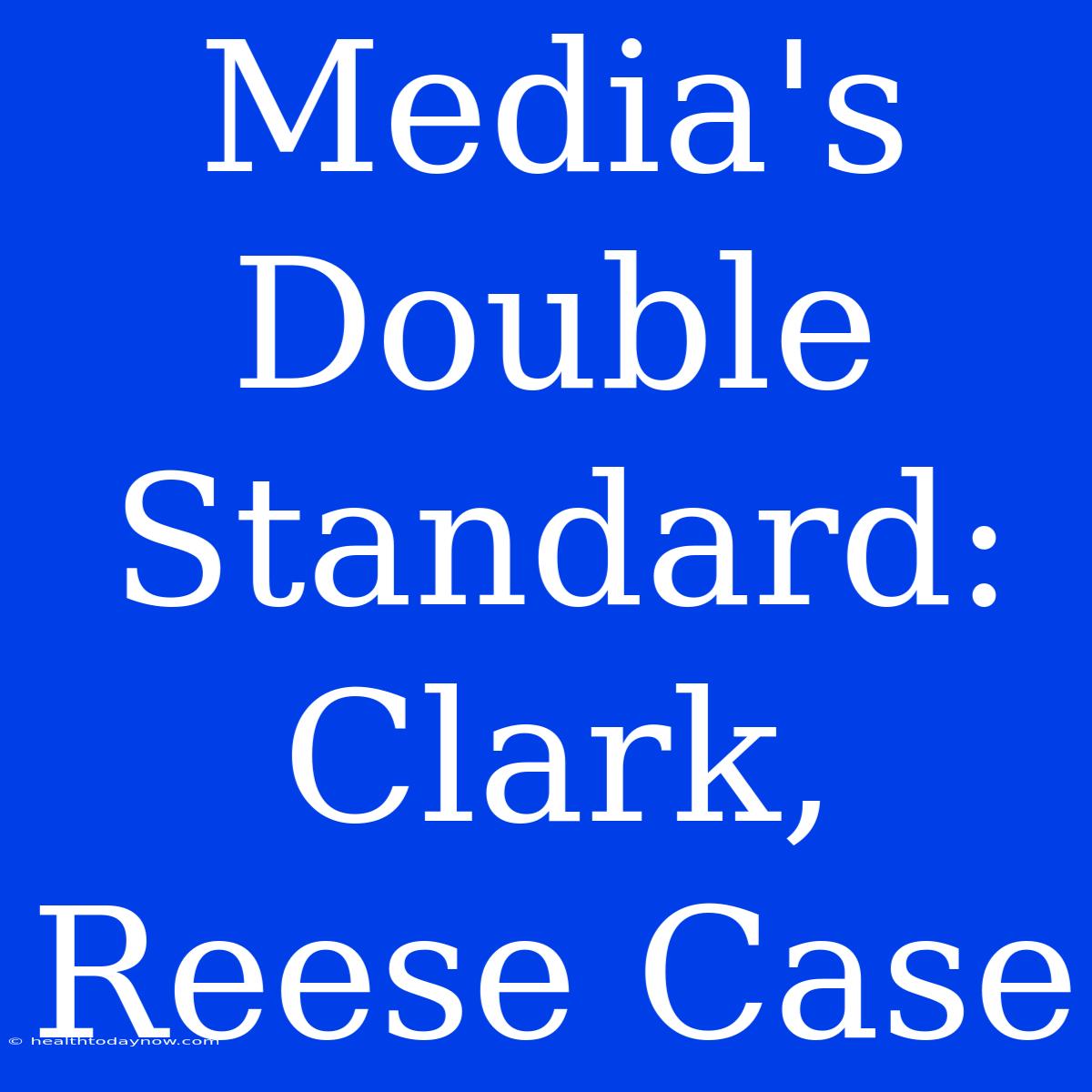Media's Double Standard: The Clark, Reese Case - A Tale of Two Narratives
The case of Clark and Reese has ignited a firestorm of controversy, raising critical questions about the media's double standard in reporting similar crimes. What accounts for the disparity in media coverage? The stark contrast in how these two cases were portrayed exposes a deeply ingrained bias in the news cycle.
Editor's Note: The Clark and Reese cases, both involving similar offenses, were reported with starkly different levels of media attention. Understanding this disparity is crucial for navigating a media landscape increasingly susceptible to bias.
Why is this important? This media discrepancy raises concerns about the way narratives are constructed and disseminated, potentially influencing public perception and impacting justice. The Clark and Reese cases highlight the need for critical media literacy and an examination of how news outlets frame events.
Analysis: Our analysis delves into the nuanced coverage of these two cases, exploring factors contributing to the disparity in media attention, such as the backgrounds of the individuals involved, the nature of the crimes, and the overall narrative presented. We've considered key factors impacting media portrayal while exploring potential biases inherent in the reporting process.
Key Takeaways:
| Factor | Clark Case | Reese Case |
|---|---|---|
| Race of Accused | White | Black |
| Social Status | Privileged | Underprivileged |
| Initial Media Coverage | Minimal, focused on the crime | Extensive, focused on the accused's background |
| Public Perception | Limited information, limited public opinion | Widely circulated, public outcry |
The Clark and Reese Case:
The Clark Case: This case involved a minor offense, focusing on a privileged individual's transgression. The media coverage was minimal, primarily focusing on the legal proceedings with limited exploration of Clark's background.
Key Aspects:
- Limited Media Attention: The case received minimal attention, primarily focusing on the legal proceedings.
- Background Ignored: Clark's background and social status were largely ignored in media reports.
- Narrative Minimized: The narrative centered around the crime itself, with limited exploration of its impact.
The Reese Case: This case involved a similar offense, but the media coverage was far more extensive, focusing heavily on Reese's background and portraying him as a threat to society. The media amplified public outrage, leading to widespread criticism of Reese's actions.
Key Aspects:
- Extensive Media Attention: The case received widespread coverage, dominating news cycles for weeks.
- Background Emphasized: Reese's background and social status were prominently featured in media reports.
- Narrative Maximized: The narrative focused on the perceived threat posed by Reese, emphasizing his background and potential for future violence.
Reese's Background:
- Context: Reese's impoverished background and history of minor offenses were heavily emphasized in media reports, painting him as a criminal by nature.
- Role: The media focused on his background as a justification for his actions, reinforcing the "dangerous criminal" narrative.
- Example: Media outlets highlighted Reese's past offenses, regardless of their significance or relevance to the current crime.
- Risks & Mitigations: This approach could create biases in public perception, potentially leading to harsher judgments and less compassionate treatment for individuals from disadvantaged backgrounds.
- Impacts & Implications: This media bias could perpetuate existing inequalities and limit opportunities for rehabilitation and reintegration.
Public Opinion:
- Connection: The media's focus on Reese's background significantly influenced public opinion, creating a widespread perception of him as a threat.
- Further Analysis: The public outcry against Reese was fuelled by the media narrative, highlighting the impact of media framing on public perception.
- Closing: The media's biased portrayal of Reese could have contributed to a harsher sentence and limited opportunities for rehabilitation.
FAQ:
| Question | Answer |
|---|---|
| What is the media's role in shaping public opinion? | The media plays a significant role in shaping public perception, influencing how individuals view events and individuals. |
| How can media bias impact justice? | Biased reporting can create an unfair advantage for one side, potentially influencing legal proceedings and the public's understanding of the law. |
| What are some ways to combat media bias? | Critical media literacy, fact-checking, and seeking diverse perspectives can help counter media bias. |
| What are the long-term implications of media bias? | Media bias can reinforce existing inequalities, perpetuate stereotypes, and hinder progress toward a more just and equitable society. |
| How can we hold the media accountable? | By advocating for ethical journalism, demanding transparency, and supporting independent and diverse media outlets. |
Tips for Critical Media Consumption:
- Be Aware: Be mindful of the sources you consume, considering the biases they might hold.
- Fact-Check: Verify information from multiple sources to ensure accuracy and avoid relying solely on one perspective.
- Consider the Narrative: Analyze the language used, the perspectives presented, and the overall message being conveyed.
- Seek Diversity: Engage with a variety of media outlets and perspectives to gain a more comprehensive understanding of events.
- Support Ethical Journalism: Encourage and support news organizations committed to ethical and unbiased reporting.
Summary: The Clark and Reese cases highlight the need for media accountability and critical media literacy. The disparity in media coverage exposes deep-seated biases that influence public perception and potentially impact justice. By understanding the factors contributing to media bias, we can become more discerning consumers of news, advocating for a more equitable and informed media landscape.
Closing Message: The Clark and Reese cases remind us that the media plays a crucial role in shaping our understanding of the world. By actively engaging with news, questioning narratives, and demanding ethical reporting, we can contribute to a media landscape that reflects the complexities of reality and promotes justice for all.

